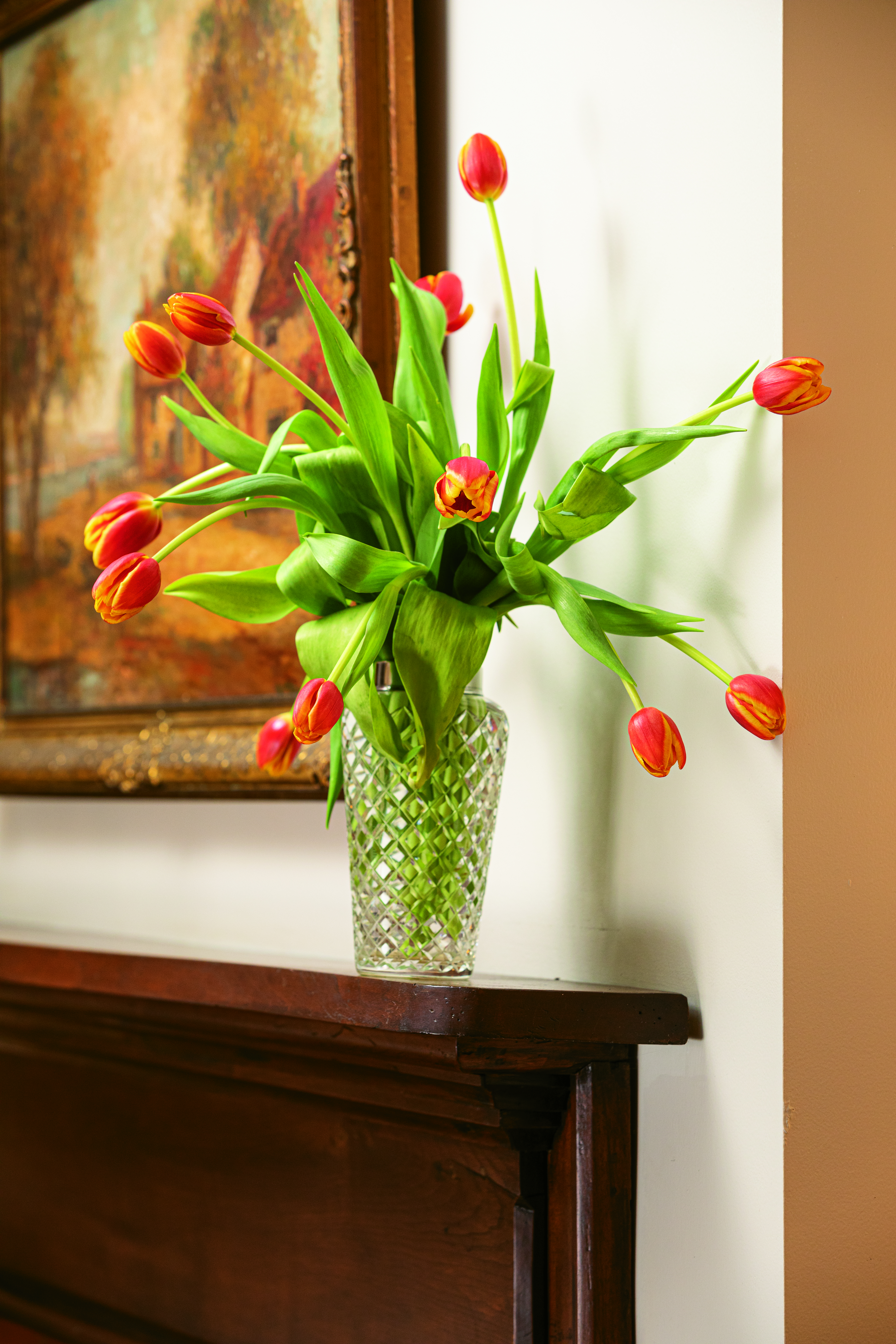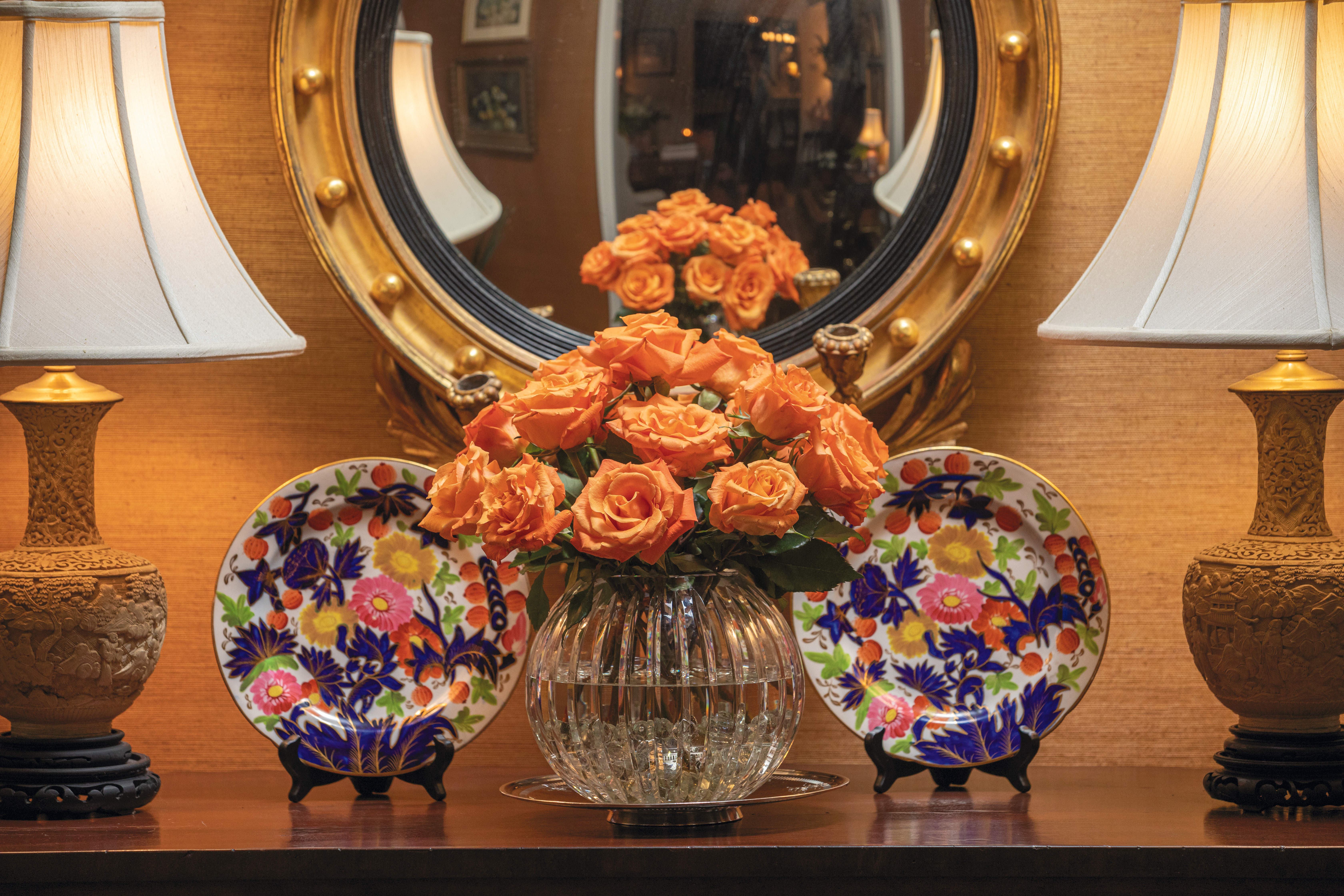
A perfectly magnificent mound of roses in a classic rose bowl is supported by glass balls that secure the stems in the base of the vase. Placing the roses in front of a mirror adds depth and dimension to the display.
Flowers are a beautiful universal language — carefully chosen, planted, grown, nurtured, cut, transported, shared, and loved. Creating a floral arrangement from local market flowers is actually one of the easiest and most inexpensive ways to add instant beauty into your home or to show love to someone else, especially when your own garden is not in bloom. Flower arrangements brighten a space, add a pop of color, infuse personality, and inspire artistry. Purchasing a few sleeves of flowers is worth the splurge, so dive in and give it a try!
If you are new at selecting flowers from a local supermarket, let flowers speak to you by spending a few minutes soaking in the various colors and textures to determine which ones appeal. Flowers have a mystery, and people gravitate toward different blossoms in the same way that artists prepare to create their palette.
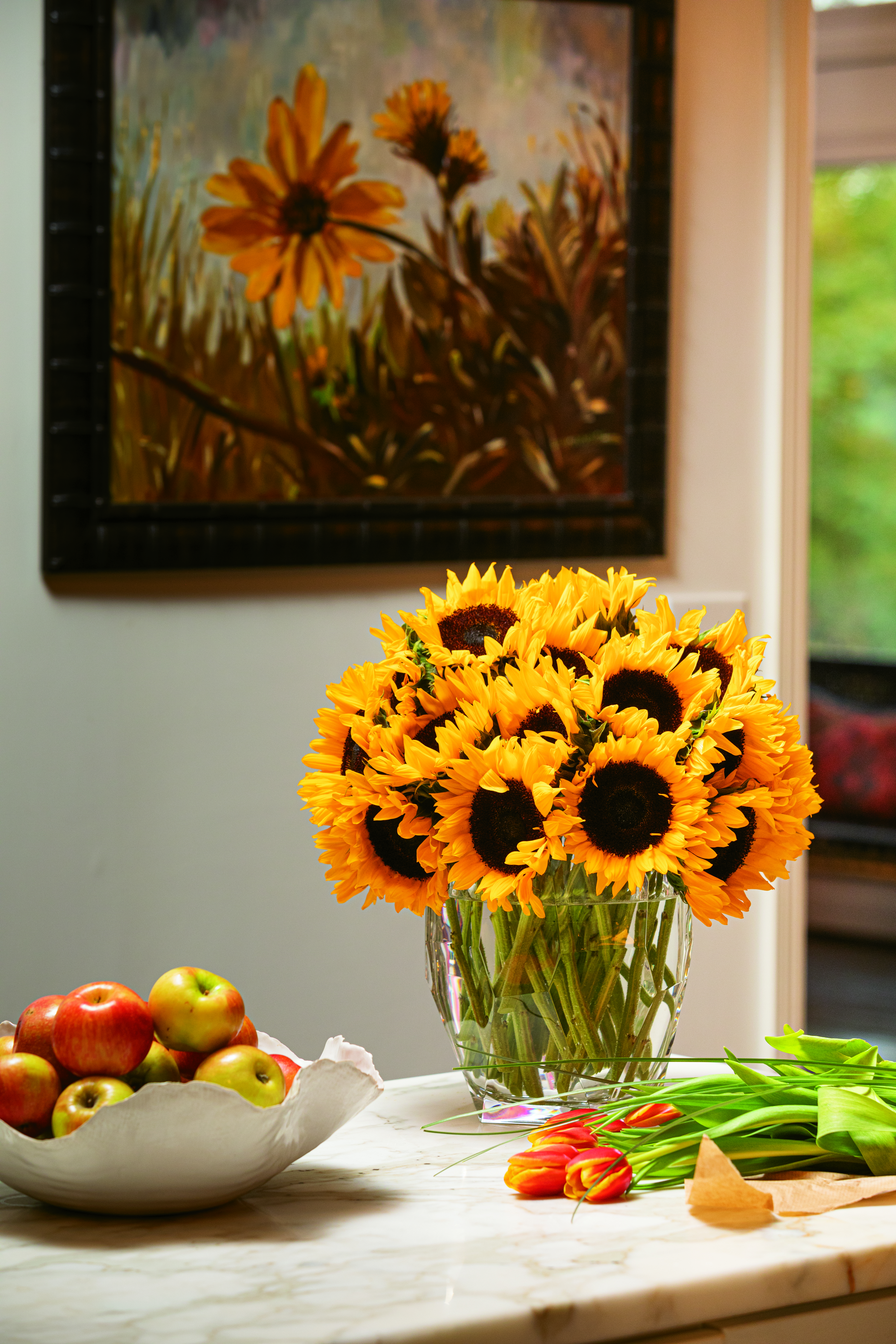
Market flowers are generally showcased together in buckets, where you can easily handpick the best of a variety. Learning when a store receives fresh flower shipments is helpful. If purchasing flowers for a special occasion or event, ask the store’s floral manager to hold particular flowers for pickup on the day they arrive.
Seasonal flowers are now available all year long, and single variety flower arrangements are the easiest go-to for almost any spot. Tulips, hydrangeas, sunflowers, gladiolas, lilies, alstroemeria, and roses, paired with local greenery, are ideal flowers with which to experiment. If you are on a budget, keep an eye out for under $10 deals, such as 10 stems of roses, or 20 fresh cut tulips with bear grass included.
If the arrangement is for your home, look for places that need a fresh splash of color. Obvious spots might be the center of your dining table, kitchen island, entrance hall, coffee table, dresser, or vanity. Walk through your home and find other axial vistas. Turn a corner and walk into a room to determine if an obvious focal point needs an arrangement. Try a few vases in these spots.

Think about the flowers before constructing an arrangement. Are the flowers long or short-stemmed specimens, weak or strong? Each flower has a number of ways to be showcased and a mind of its own regarding its presentation in an arrangement.
Dinner party table arrangements should be low enough for individuals to converse across the table while incorporating a mix of florals to complement the table setting. Two options include individual arrangements in julep cups or a low glass cube for an effortless and graceful grouping of stiff stemmed flowers, like roses or mums.
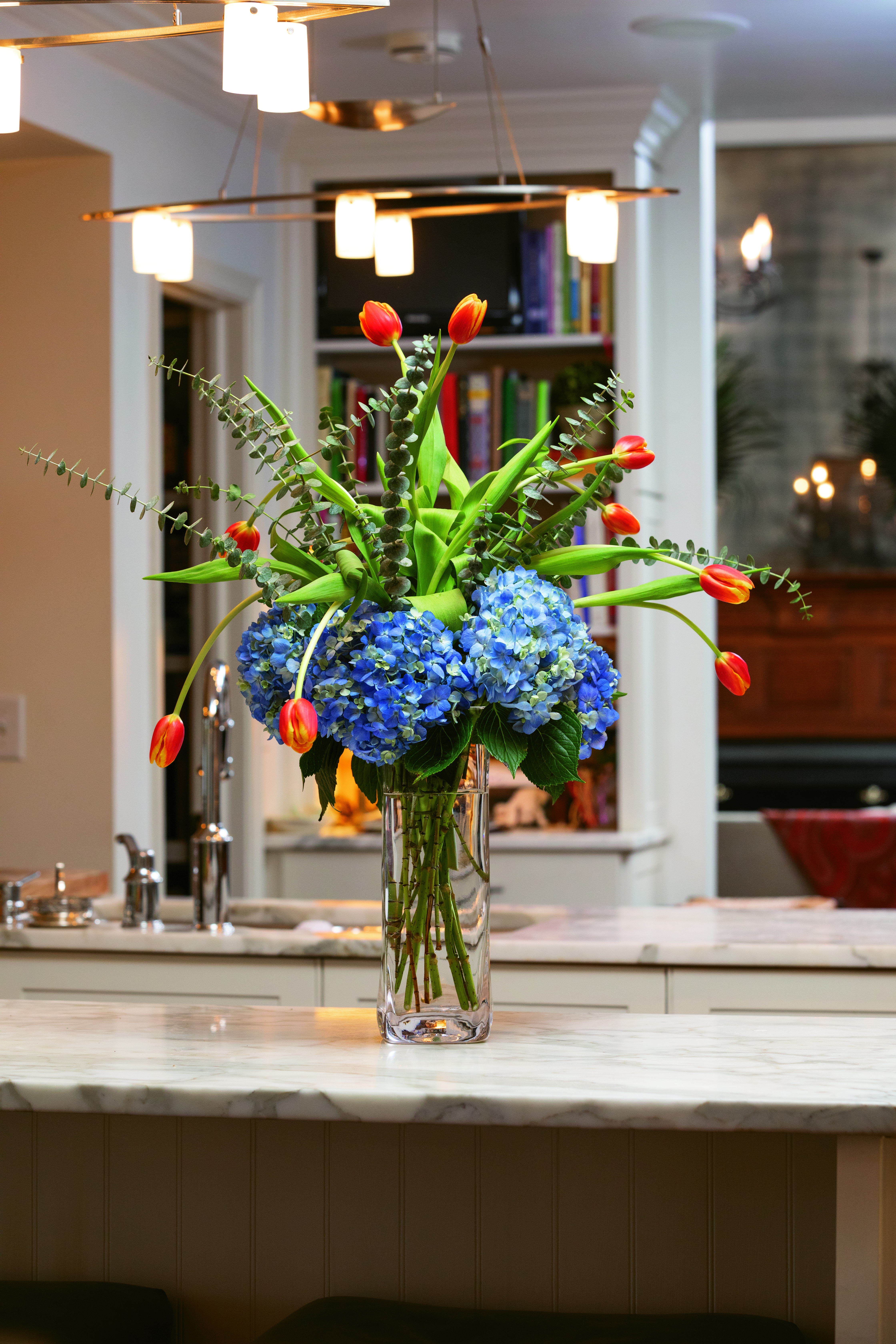
Coffee table arrangements and a bouquet for a friend can easily be a concentration of one flower. Use cylinder shaped vases or spheres with a small neck. These are ideal for tulips as the natural arc of the stems takes care of arranging themselves. Roses in a round “rose bowl” arranged in a mound or with the stems straight and proud are classic and beautiful in any setting. Opt for a very tall vase to support lilies or gladiolas for the kitchen island to create a vibrant tower of color (and they last forever!). Small bud vases can be used to highlight a stunning single flower or a handful of posies to be placed in the powder room or on a bedside table, for example.
When a vase works well with an arrangement, stick with a simple design and then branch out and try new entertaining options.

Dependable tips for assembling flowers and promoting longer fresh blooms include:
● Keep flowers in a bucket with stems trimmed at an angle to soak up as much water as possible until ready to use.
● Deposit packets of flower food in buckets and vases with tepid water; this trick contributes to prolonged flower life.
● Before arranging, separate the blooms, preferably flat on a counter, and again, cut each stem at a 45 degree angle; place them one at a time in the vase. Stem lengths will vary as you build your arrangement. Start with the heavier blooms first to create a framework, or a mass of alstroemaria or hydrangeas for a base to showcase longer stems.
● Warm water helps flowers with tightly closed flower heads, such as roses, open more quickly and fully.
● Always trim off leaves that fall below the water line as this will keep bacteria from growing and possibly decrease the need to change the water.
● Weave stems together to support the arrangement, and remember that dense arrangements are forgiving. Even if a flower is snipped too short, it will work in the overall arrangement because the flowers support one another. Push and pull so the final arrangement looks natural and slightly imperfect.
● Floral arrangements last longer when placed away from direct sunlight and heat.

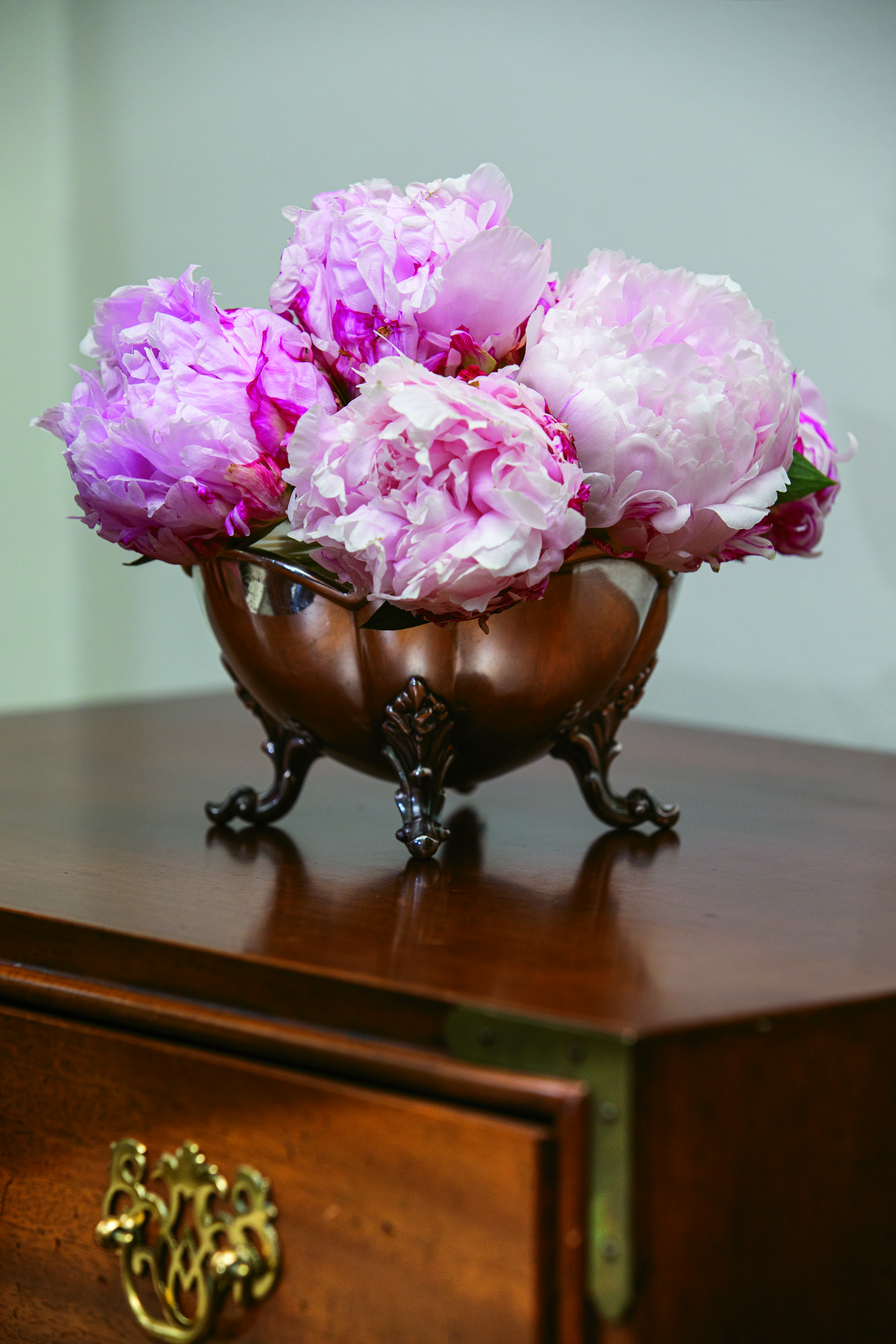
Cutting greens from the garden incorporates some of your natural yard foliage into the arrangements. Greenery can be used with lilies to fill the space until the blooms open. Think about using trailing ivy for a romantic addition, pittosporum as a filler, and nandina leaves and berries for variety. Fatsia leaves provide backdrops for gerbera daisies or other blooms, and Aspidistra elatior — or the cast-iron-plant — is often used to line a vase base so that all the tangle of stems in the water cannot be seen.
Items nice to have on hand to make flower arranging easier are sharp cutting shears, small scissors, rubber bands to secure flowers like tulips together if they need underpinning, florist marbles to weight a vase and reinforce stems, a foam floral Oasis or wire ball in the base of the vase to support flowers, and thin clear floral tape to attach in a crisscross pattern on the top of the vase to help hold flowers in place. Extras might be Spanish moss for arranging orchids and a variety of sticks and twine for tying up stems. Finally, a cardboard box with bubble wrap in the base works for transporting arrangements safely and avoiding water spills. Enjoy the beauty of market arrangements — just because you can!
